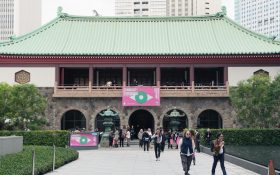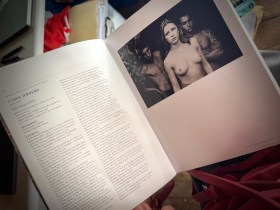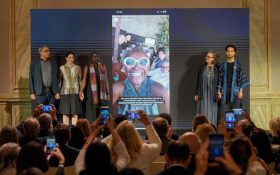“Art is sexy! Art is money-sexy! Art is money-sexy-social-climbing-fantastic!” said former director of the Metropolitan Museum of Art, Thomas Hoving.
He wasn’t wrong. Art confirms financial and social status in a unique way. Fast cars and yachts will say a lot about your bank balance but buying art elevates you to a person of taste, a philanthropist, a patron.
The history of art could be seen as a history of patronage. The Medici bankrolled the Renaissance and, without Ambroise Vollard, Picasso may have remained an unknown eccentric painting funny shaped nudes.
Contemporary patronage is a curious beast. There are the big players, Charles Saatchi, Francois Pinault and Frank Cohen, able to pluck artists from obscurity and turn them into international names. But there are also the movers and shakers, less headline inducing cash perhaps, but just as much influence. Figures like Anita Zabludowicz, a serious collector and regular at Frieze or Louisa Buck and Judith Greer, collectors and co-authors of Owning Art: The Contemporary Art Collectors Handbook, a guide for the uninitiated on how to begin your own collection.
While patronage has a solid history (after all starving artists need their bread and the rich need guarantees of getting into heaven) it is not perhaps as central to our culture as it is to that of the United States. Shadow Culture Minister Ed Vaizey was recently quoted as saying: “Philanthropy is going to be a big debate in the arts in the next twelve months – how can we encourage the new wealth to donate to our public institutions, can we create an American philanthropic culture in this country?”
In America, the thing to do once you’ve made your money is to give it away. You cannot move in American institutions without bumping into the Vanderbilt this or the Rockefeller that. Many argue that the tax breaks are the incentive but that cannot be the whole truth. Similar tax breaks for charitable giving to the arts exist in this country – they’re just not as well publicised or just have not been what British millionaires want to spend their cash on.
Saatchi, is of course the exception and dominant tastemaker. A couple of months ago the papers were awash with the news that he had answered the prayers of another nascent artist. He walked into the degree show at the Royal Academy and promptly purchased all of James Howard’s digital print work. For a mere £4,500 he bestowed his patronage on an unsuspecting Howard who was apparently asleep at the time.
Saatchi obviously knows the value of his own name. In conjunction with the opening of his new gallery space in Chelsea his website now allows artists to upload their own work and leave it for appraisal by the public and occasionally visiting critics and curators who compile itunes-like “favourite” lists. This is an interesting twist on the new patronage. In allowing his name, a byword for dealing success, to be used interactively he has become a virtual patron. Not so strange perhaps at a time when you can have virtual friends and virtual parties (one wonders what his avatar on Second Life would look like and why he hasn’t bought some gallery space on it).
So not only can patronage be imparted via the web but a wider range of people are beginning to invest in art. Colin Tweedy, Chief Executive of Arts & Business claims that the number of people investing in the arts has risen exponentially and that it is no longer purely the realm of the super rich. He points to the “rise of individual giving, or philanthropy on a scale that is equivalent to the Victorian patrons that endowed Birmingham and Liverpool”.
He continues, “more private jets fly to Art Basel Miami than to the Oscars. Art is sexy, cool and big money. UBS, Deutsche Bank, Bulagari and Mont Blanc all see the value of the association. Frieze in London has astonished everyone by their success. These businesses want to reach the urban rich – art is the vehicle.”
In mentioning the “urban rich”, Tweedy identifies the major difference between contemporary patrons and those of centuries past – contemporary patrons work for a living. He points out that these new patrons are often quite young and they want to be actively engaged in what they are investing in, a process that is often referred to as “venture philanthropy”.
The issue then, is how to get this city money from the cash rich and time poor into the arts?
Organisations are springing up all over the place. A&B are launching a new initiative in the autumn. “Culture House” is a salon style culture club aimed at the city boys and their partners. Outset Contemporary Art Fund is opening up the world of east end galleries to private patrons who otherwise may just not know where to start when it comes to collecting contemporary art. Blood, a young patrons’ scheme organised by the Contemporary Art Society, is encouraging even those without the excess city cash to invest in smaller pieces. Each of these organisations provides talks by curators, dealers and collectors in order to educate and liaise between the money and the art.
Prolific collector and patron, Anita Zabludowicz writes that: “One of the most important times on an artist’s career is that moment when they become commercial. You hope that if you are helping the gallery that is promoting them, then that gallery can keep up with the artist throughout their career. So you are helping both, and each is as important as the other. That feeling of attachment is a very good feeling.”
Through these programmes this feeling of nurturing a young talent and the broader idea of patronage is being made viable – not only available not the super rich but to those with a bit of cash and curiosity. Everyone gets a taste of the immortality that Tweedy says is a key to the collecting impulse: “Would we remember Carnegie, Frick or Mellon without their patronage- or in the UK, Sainsbury, Tate or Hamlyn?”
Art, it seems, is sexier than ever. One artist noted to me recently that twenty years ago one attended a “private view”, ten years ago they were “openings” and now they’re actually called “parties”. The money pouring into the art world and more specifically the London art world is akin to the Victorian boom and everyone wants a piece of it. It is no longer enough just to have the right house or boat, you have to have the right art and thanks to the current market, more and more of us can get a piece of the action.
Tweedy sums it up perfectly, pointing out that; “In the UK alone, perhaps ironically, the Blair years have seen millionaires grow by income 4% a year and by number 7%. Art is the new currency, how many Porches and yachts can anyone buy?”




